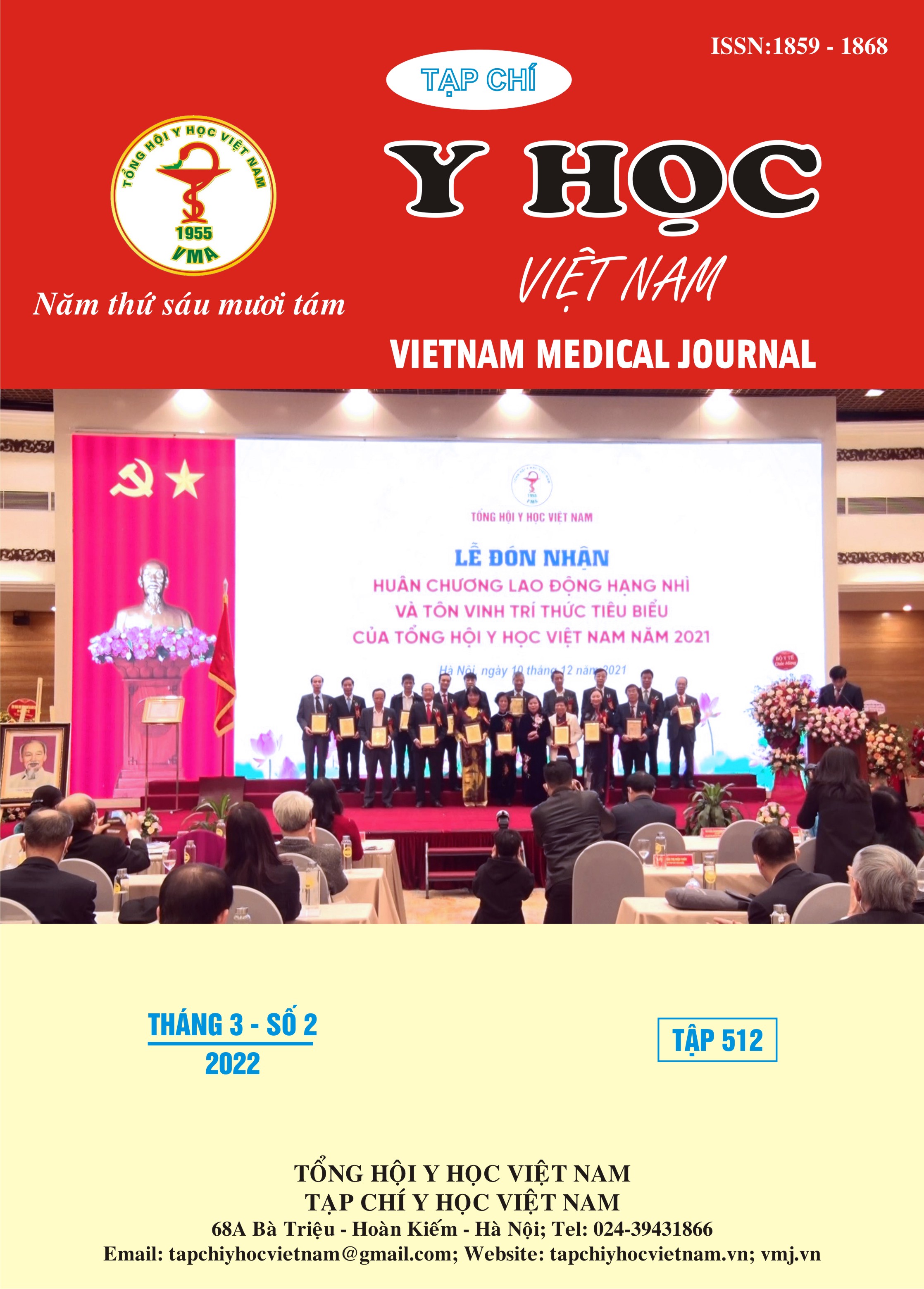EVALUATE RESULTS TREATMENTS LUMBAR DISC HERNIATION LEVEL I, II, III WITH SHORTWAVE THERAPY, ACUPRESSURE, ELECTRO-ACUPUNCTURE, TRACTION THERAPY
Main Article Content
Abstract
Objective: Evaluteresults treatments lumbar disc herniation level I, ii, iii with shortwave therapy, acupressure, electro-acupuncture, traction therapy. Method: Random control trial on 70 lumbar disc herniation that MRI level was I, II, III were treated at VietNam-Russia tropical center from 4/2021 to 12/2021. Result: The Experimental group (group using a combination of four methods) had an average treatment time of 17,6 (2,97) days, the control group (group using electro-acupuncture, acupressure) had an average of 20,9 (3,52) days. The Experimental group had a shorter treatment time than the control group on average of 3,29 days, 95%CI from 1,74 to 4,74 days. After the intervention, the VAS, DMC, and ODI indexes of the study group improved better than that of the control group, the difference was statistically significant with p<0.01. Conclusion: The combination of four methods helps to shorten the treatment time, improve pain symptoms, the degree of muscle contraction, and the degree of disability better than the group using electro-acupuncture, Acupressure.
Article Details
Keywords
Lumbar disc herniation, electro-acupuncture, Acupressure, shortwave therapy, traction therapy
References
2. T. Q. Bảo, Bùi Thanh Hà, and Đ. V. Phương, “Nghiên cứu hiệu quả của điều trị thoát vị đĩa đệm cột sống thắt lưng bằng phương pháp kết hợp điện châm với kéo dãn cột sống,” Tạp chí thần kinh học, 2010.
3. Y. Zhang, S. Tang, G. Chen, and Y. Liu, “Chinese massage combined with core stability exercises for nonspecific low back pain: A randomized controlled trial,” Complement. Ther. Med., vol. 23, no. 1, pp. 1–6, 2015, doi: 10.1016/j.ctim.2014.12.005.
4. S. Tang, Z. Mo, and R. Zhang, “Acupuncture for lumbar disc herniation: a systematic review and meta-analysis,” Acupunct. Med., vol. 36, no. 2, pp. 62–70, 2018.
5. J. Mu, J. Cheng, J. Ao, J. Wang, and D. Zhao, “Clinical observation on treatment of lumbar intervertebral disc herniation with electroacupuncture on Jiaji (Ex-B 2) points plus traction: A clinical report of 30 cases,” J. Acupunct. Tuina Sci., vol. 5, no. 1, pp. 44–47, 2007.
6. C. Keji and X. U. Hao, “The integration of traditional Chinese medicine and Western medicine,” Eur. Rev., vol. 11, no. 2, pp. 225–235, 2003.
7. P. Rong et al., “Mechanism of acupuncture regulating visceral sensation and mobility,” Front. Med., vol. 5, no. 2, pp. 151–156, 2011.
8. J.-S. Han, “Acupuncture and endorphins,” Neurosci. Lett., vol. 361, no. 1–3, pp. 258–261, 2004.
9. R. S. Kiser, R. Gatchel, K. Bhatia, M. Khatami, X.-Y. Huang, and K. Altshuler, “Acupuncture relief of chronic pain syndrome correlates with increased plasma met-enkephalin concentrations,” Lancet, vol. 322, no. 8364, pp. 1394–1396, 1983.


